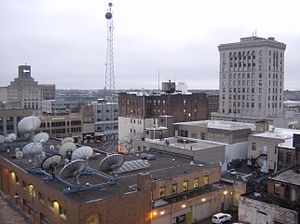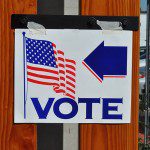Ann Althouse talks about the new Bernie Sanders ad, in which he uses a montage of farmers and “everyday-life” images as well as bits of campaign rallies, set to the music of Simon and Garfunkel’s “America,” with it’s refrain of “they’ve all come to look for America,” then, in a follow-up post, dissects the song’s lyrics, which are not as sunny and optimistic as, say, “God Bless the USA,” but rather express a longing:
There’s this deep feeling we have about America. It makes sense to speak of looking for it, longing for it. Obviously, we are right here in America, so what’s to look for? But that obviousness is obtuse. We understand the idea of looking for America, finding the real, more essential, more beautiful America, the America that fulfills our dreams and lives up to our ideals. Donald Trump says “Make America great again,” as if there’s one America and sometimes it’s good and it can go bad and it can become great again. But another, more poetic way to put that would be “Make America America again” or “We’ll find our way back to America.” I don’t recommend that as a slogan for Trump. Too easy to call him reactionary and racist. But you see my point: Americans understand the idea of searching for America: We’ve all come to look for America.
And — thinking in those terms — I thought about one of the lyrics in the song itself: “It took me four days to hitchhike from Saginaw.”
According to Wikipedia, the reference comes from having been in Saginaw, performing there in 1966 and writing the song during his stay. But is this just coincidence? Did the word itself just fit into the lyric’s rhythm?
What was Saginaw like in 1966?
Declining.
It’s a small town in the grand scheme of things, with a population of 100,000 at its peak in 1960, to a present population half that size. In the 1960s, White Flight hit Saginaw, when an equal-opportunity housing ordinance eliminating segregation within Saginaw led whites to leave the city altogether. Like Flint and Detroit, it was a city which grew considerably in the first half of the 20th century, and, specifically, was the home to multiple GM plants by the 1960s (see Wikipedia), and like them, it has suffered from plant closures and staff reduction due to automation. What’s more, the city’s problems are (per Wikipedia and echoed elsewhere) further blamed on the fact that, unlike other towns, it ceased annexing suburban areas early on. Saginaw is, as a result, second only to Detroit in the percent of its children living in poverty.
Had industrial decline hit Saginaw as early as 1966? It’s hard to say, as the town is too small and the date too specific to find anything online.
But in any case, there was clearly unrest, as, when the 1967 Detroit riot broke out, a similar riot also occured in Saginaw.
What did Paul Simon see when he arrived at, and performed in Saginaw, that inspired him to write this song? Was he, even then, looking out his hotel room window or through the cab windows, aware that Saginaw was a place to leave, to “look for America”?
Of course, Sanders skips this lyric, and jumps to “counting the cars on the New Jersey turnpike.” And I’m not going to read anything insidious about this omission of Saginaw in the commercial. But, still, what with neighbor Flint in the news, interesting, and sad, no?
(Image: Saginaw skyline, from https://en.wikipedia.org/wiki/WNEM-TV; By User:Hsxeric (Own work) [GFDL (http://www.gnu.org/copyleft/fdl.html) or CC BY-SA 4.0-3.0-2.5-2.0-1.0 (http://creativecommons.org/licenses/by-sa/4.0-3.0-2.5-2.0-1.0)], via Wikimedia Commons)














